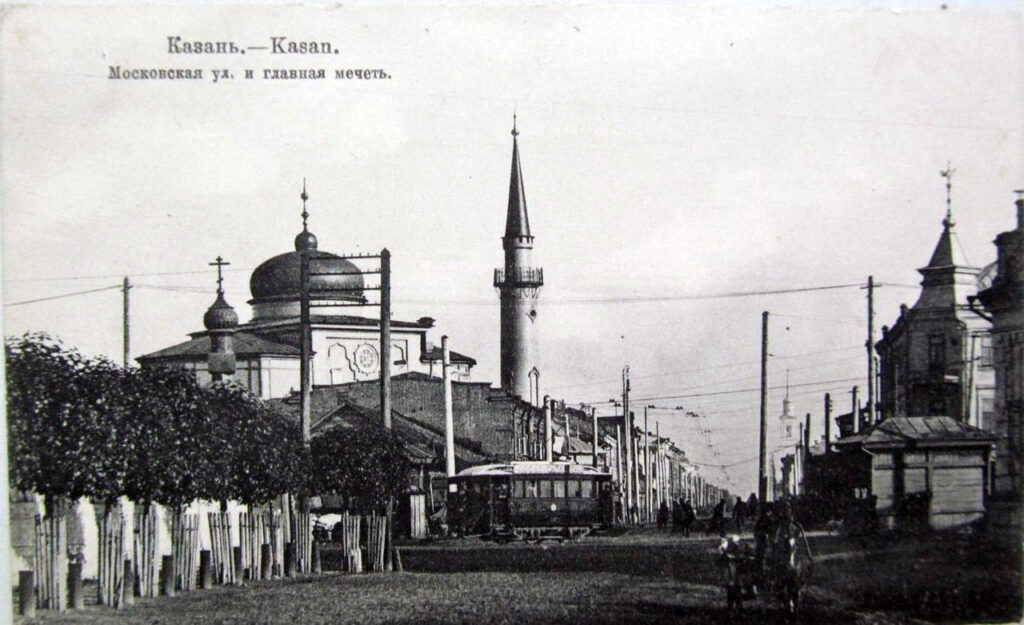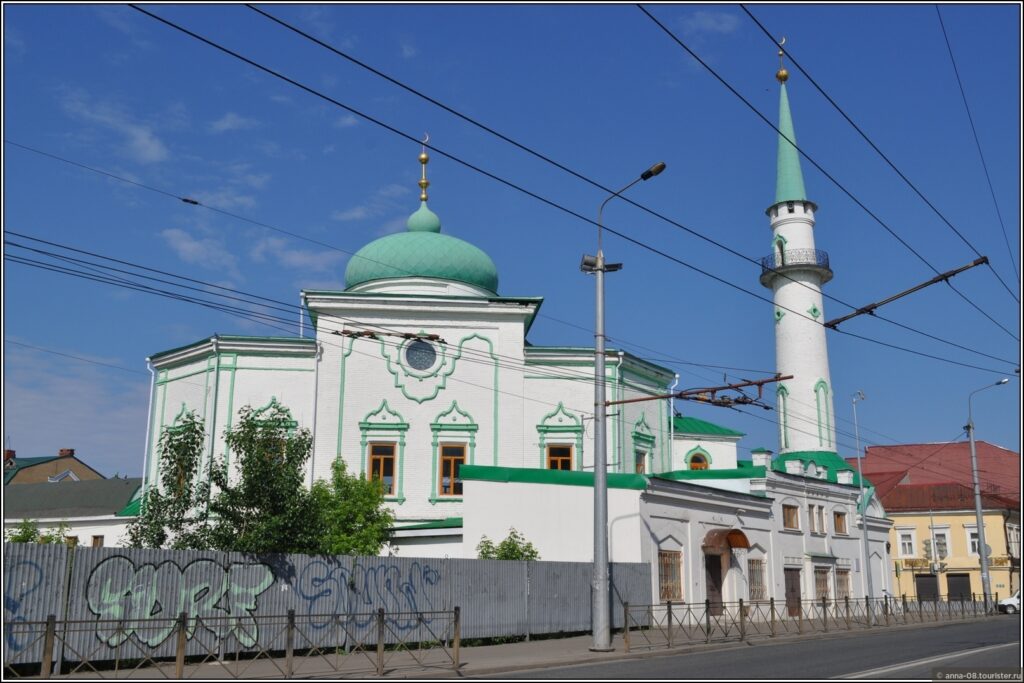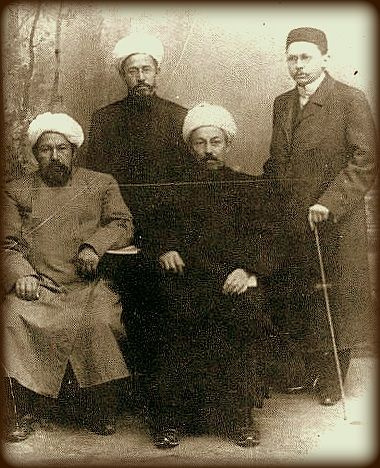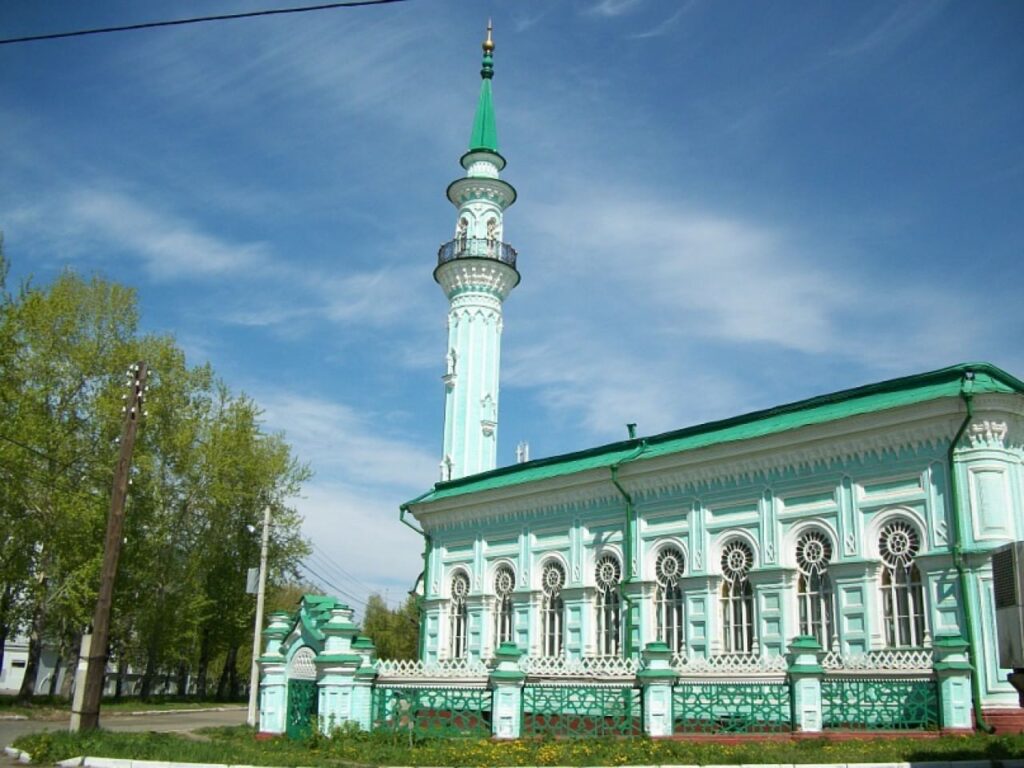The Nurulla Mosque – “Sennaya” (Eng. “Hay”), “Yunusovskaya”, “The Seventh Cathedral”


The mosque was built in 1845-1849 by the brothers Ibrahim (1806-1886) and Ishaq (1810-1884) the Yunusovs with funds bequeathed by their father, the first guild merchant Gubaidulla Yunusov (1776-1849).
The new type mosque spread with a ground minaret at the end of the building was designed in the eclectic style of the national romantic trend and was a milestone in its development.
In 1845-1849, a beautiful, majestic building was constructed at the junction of Sennaya and Moskovskaya Streets. The facade of the building faced directly onto the Haymarket Square. The dwelling could be seen from all sides. Now all employees of the large shopping center of the Kazan Old Tatar settlement could attend prayers.
The building is made in the form of a polygon and is equipped with a dome. Distinctive features are monumental arcades, a central hall, walls devoid of plaster, patterned arabesques, stained-glass windows. This image is clearly visible in the Kubbat al-Sakhra mosque, which is located in Jerusalem. Looking upon the shape of the dome, one can trace the notes of the Ottoman eras of the VI-VIII centuries. The three-tiered minaret, erected right in front of the building, is equipped with a luxurious pointed arch. It leads out of the main building by means of a covered passage.
The selection of the construction point for the mosque was carried out carefully. The Jami Mosque on the Haymarket Square is given an important place. This is a religious Islamic building of Kazan, which preserves a centuries-old history. Mosques occupied an essential link, acting as the main center of religious and cult life. Rich merchants, clergy, and the Tatar City Hall were responsible for the order in Islam. Haymarket has always been very crowded. People from all social groups could be found here.
1929-1992 were difficult years for the mosque. The building was used for a variety of needs, including housing. In 1992, it was decided to rename the dwelling and give it a name — “Nurulla.” In 1990-1995, a considerable cycle of restoration activities began. Maximum efforts were made to restore the minaret. To date, the Nurulla Mosque or the Seventh Cathedral is active. Services are regularly held here.
Other publications
All publicationsNovember 1st
First-guild merchant, philanthropist Abdulla Mukhametyusupovich Apanayev
One of the founders of the Apanayevs and the Kazakovs Commercial and Industrial Partnership.

February 1st
Sultan Mosque – "Usmanovskaya", "Eighth Cathedral", "Red"
It was built in 1867 by the Kazan merchant of the first guild Zigansha Usmanov (1817-1872) according to the project of the architect P.E. Anikin.

